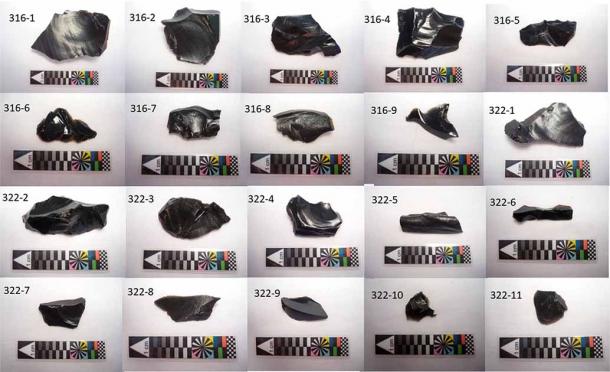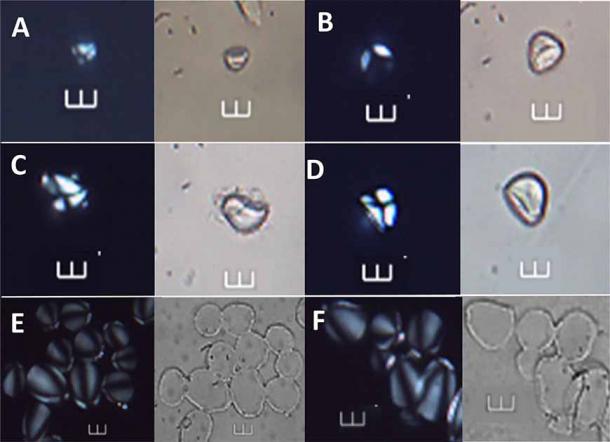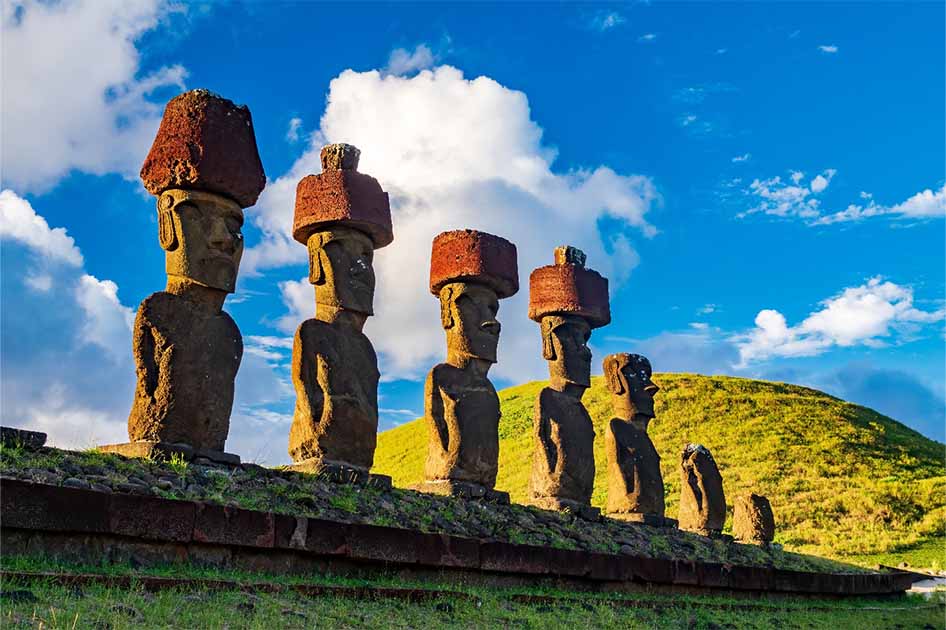Rapa Nui Obsidian Discovery: Did the Islanders sail to America?
It has long been thought that the people of Rapa Nui (popularly called Easter Island) lived a largely isolated existence, cut off from other lands by the vast and treacherous ocean. However a new discovery on the islands suggests that the islanders were in contact with their continental neighbors.
The first settlers of Rapa Nui a thousand years ago left behind ancient food remains on obsidian blades, and the analysis paints a fascinating picture. Examination of the starch grains clinging to these obsidian blades indicates that the earliest inhabitants of the island indulged not only in the indigenous plants of Polynesia but also in foods native to South America, located approximately 2,300 miles (3700 km) away.
Obsidian Cutlery
The study, published in PLOS One, has been conducted by archaeologists from various Chilean institutions at the archaeological site of Anakena, which represents Rapa Nui's earliest known settlement from around 1000 to 1300 AD. Evidence suggests that regular contact was maintained between early Polynesians and South Americans dating back a millennium, wherein the former would travel to South America and interact with the inhabitants, before voyaging back.
- The Return of the Moai: Rapa Nui and the Fight for its Ancestors
- Undeciphered Rongorongo Script Found on Easter Island Predates European Contact

The obsidian blades discovered on Rapa Nui (PLOS ONE)
In their investigation into the early years of the Rapa Nui settlement, researchers undertook a comprehensive analysis of ancient food resources. While prior studies had focused on animal remains, such as fish, dolphins, seals, chickens, and rats consumed by the early settlers, plant remains had received less attention.
The researchers examined 20 obsidian blades unearthed beneath the ahu at Anakena in 1987, revealing traces of 46 starch grains, though only 21 grains could be definitively identified. They cumulatively represented eight plant species: breadfruit, cassava (also known as yuca or manioc), taro, purple yam, sweet potato, Tahitian apple, achira, and ginger.
Some blades even showed evidence of multiple plant species, suggesting their versatile use for various tasks such as cutting, peeling, grating, or other forms of food processing, according to a press release.
While the presence of yam and taro starch grains was expected, as they had been previously identified on Rapa Nui, the discovery of breadfruit and Tahitian apple was novel, as neither plant had been previously documented on the island. The identification of ginger marks the first occurrence of this spice in Remote Oceania, according to the researchers.
- Pukao Study Claims Easter Island had a Cooperative Community Not A Warrior Culture
- Genetic Analysis Shows Early Contact Between South Americans and Polynesians

Traces of ginger identified on the obsidian blades, the first evidence of the plant in Remote Oceania (PLOS ONE)
Breadfruit and Tahitian apple are crucial crops in Polynesian agriculture, likely introduced by the earliest Polynesian settlers via canoe. Ginger on the other hand may have served medicinal and culinary purposes in the early island society.
Of particular interest are cassava, sweet potato, and achira, all of which originate from South America. The presence of sweet potato remnants at the deepest layers of the excavation suggests their early introduction to the island, according to a press release.
Corroborating the Oral History
These findings strongly corroborate the oral histories of the Rapu Nui people, which recount numerous voyages to South America. It is proposed that these early settlers engaged in repeated journeys, bringing back novel foodstuffs that would shape the island's agricultural landscape for generations to come.
"Our results show that, by the time that people were living at the Anakena site, they already had voyaged to the South American coast and been in contact with South American peoples. We argue that Polynesian (Pacific) voyagers reached the coast of the American continent and interacted with local American populations and, at some later point, returned to the Pacific islands with some American crops that were then cultivated on different islands alongside traditional Pacific crops," said Andrea Seelenfreund, an archaeologist at the Academy of Christian Humanism University in Chile and one of the study authors, told Live Science in an email.
Rapa Nui, located in the southeastern Pacific, is renowned for its iconic moai statues, erected on stone platforms known as ahus. The island, formed from three volcanoes, saw its settlers crafting the moai from volcanic ash.
While Dutch explorers introduced Rapa Nui to the wider world in 1722, the island had been inhabited for centuries. However, the precise timeline and origins of its settlement remain somewhat enigmatic, with experts debating whether the initial settlers hailed from Polynesia, South America, or both. Oral traditions of the Rapa Nui people recount at least one voyage to South America during the island's early settlement phase.
"We have to keep in mind that long distance ocean voyaging was a highly developed skill by Pacific Island people," Seelenfreund concluded.
Top image: The foodstuffs found on the obsidian blades at Anakena in Rapa Nui suggest the islanders made the voyage to South America and returned. Source: F.C.G. / Adobe Stock.
By Sahir Pandey
References
Berenguer, P. 2024. Identification of breadfruit (Artocarpus altilis) and South American crops introduced during early settlement of Rapa Nui (Easter Island), as revealed through starch analysis. PLoS ONE 19(3). Available at: https://doi.org/10.1371/journal.pone.0298896
Harvey, A. 2024. Obsidian Blades Reveal Easter Island Inhabitants Made Contact With South Americans 1,000 Years Ago. Available at: https://allthatsinteresting.com/easter-island-obsidian-blades
Killgrove, K. 2024. Obsidian blades with food traces reveal 1st settlers of Rapa Nui had regular contact with South Americans 1,000 years ago. Available at: https://www.livescience.com/archaeology/obsidian-blades-with-food-traces-reveal-1st-settlers-of-rapa-nui-had-regular-contact-with-south-americans-1000-years-ago
Yirka, B. 2024. Plant material on obsidian blades on Rapa Nui suggests settlers there visited South America and returned. Available at: https://phys.org/news/2024-03-material-obsidian-blades-rapa-nui.html

















